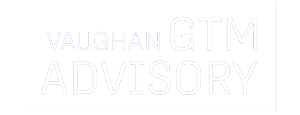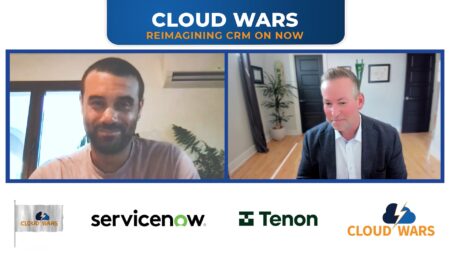Public sector government and technology leaders are experiencing the same pressures and expectations as private sector business leaders. Politics aside, citizens — just like customers — expect seamless, digital access to information, services, and resources. Digital and societal transformation are top priorities to navigate whether you are an elected official, government executive, or a leader running a business that serves the public sector.
To accelerate impact, local, regional, and national public sector leaders can study the lessons learned from their private sector counterparts. To be clear, business executives do not have digital and customer-driven business figured out. However, because of increasing customer, market, and investor expectations, business leaders have had to adapt quickly to compete. There is a significant opportunity for the public sector to follow the same path.
Based on conversations with business and government leaders, I assembled five fundamental strategies public sector leaders can build into their mission, budgets, and cultures to impact government organizations and the communities they serve.
Treat Citizens Like Customers
In B2B and B2C, consumer expectations have changed. Customers have higher expectations of the organizations they do business and interact with. Speed, agility, and responsiveness need to be built into customer engagement models throughout the entire customer lifecycle. While the labels are different, the same principles apply to public sector organizations. Prospective constituents, citizens, and businesses must be wooed and wowed by government organizations and agencies. As they become citizens or move into the community, their “onboarding” must include essential information about services, resources, and where to go for what. Public sector- and government-provided resources should be, at minimum, easy to access with the goal of creating engaging experiences.
To deliver in today’s customer-centric world, public sector agencies can re-engineer their products, services, and engagement models around their constituents and citizens. This means providing 24/7 digital access to resources, the ability to easily choose the right configuration of products and services, and to have access to self-service and human apps to navigate their relationship with the government agency.
Bet on Digital First in Every Public Sector Initiative
In 2022, 80% of U.S. residents have a mobile phone. Additionally, there are 6.6 billion worldwide smartphone users. That’s 2.9 billion, or 79%, more than the number of smartphone users there were in 2016. This explosive mobile device growth has changed how customers interact in every aspect of their life, including with government organizations. From apps that provide access to city, county, and state resources and information, the fastest path to engage, involve, and serve citizens and businesses in a community is through digital, web, and mobile initiatives.
Public sector leaders can learn from digital business leaders who have gone or are going through this digital transformation. One way is to partner with digital business leaders – those in your community and/or those with whom your government organization is doing business. Invite seasoned leaders in to absorb their learnings and then adapt transformation strategies for their government organization. The good news is that there are hundreds of digital business blueprints to apply and adapt. At the top of the list are:
- Creating a digital-first culture based on your constituents’ needs.
- Recruiting and developing digital, technology, and customer experience talent to re-engineer how the agency serves its communities.
- Adopting agile technology and processes that lower costs and increase the ability to bring new capabilities to government employees and citizens.
Invest and Set New Standards for Innovation to Involve Your Citizens and Suppliers
Innovation is rarely associated with public sector organizations. Red tape, politics, and frustration are often the images that come to mind. This is changing and can be accelerated by borrowing from the private sector. Businesses have learned how to bring innovation into all aspects of companies, including how they do business, how they deliver their products and services, and how they communicate with customers.
Public sector leaders point out areas to focus on to bring an innovative mindset to their organizations. This starts with allocating 10-15% of the budget to advanced services to make the organization run more efficiently, provide services that create expanded tax revenue, and improve community standards and participation. Innovation examples include technology strategies and capabilities widely available to every organization, including:
- The low code/no code approach to visual software development provides easier access to simple code for both internal and external developers to co-create and extend agency applications and processes.
- An agile software development approach to streamline and accelerate the ability to deliver higher quality systems and applications, which saves taxpayer money and extends budgets.
- Public sector industry clouds to both capitalize on cloud vendors’ resources and securely store, manage, and access government services and assets.
Make Talent Development and Employee Empowerment Job One
Today, talented employees have choices no matter what type of organization they work for. According to a survey by Deloitte in partnership with the Best Places to Work organization, public sector employees are much less satisfied than private sector employees. The top reasons cited by government agency employees were:
- Recognition for quality of work
- Lack of innovation for their work
- Financial rewards
That last reason is the one most cited by public sector leaders regarding challenges with attracting talent. Despite structural government constraints on the financial side, the public sector doesn’t only lead to dissatisfied employees. The survey findings suggest some solutions, too. The first two cited reasons — recognition and innovation — are immediate opportunities to improve employee satisfaction, engagement, and, most importantly, impact. Outlined below are immediate ways to accelerate impact through employee empowerment.
- Move beyond your standard government “employee of the month.” Instead, focus on coaching and training leaders on how to develop and deliver ongoing employee recognition and feedback processes, as well as a culture that highlights high-impact employees and outcomes.
- Partner your best employees and teams with local businesses or approved agency vendors to develop and deploy breakthrough initiatives in your communities. This type of knowledge transfer and co-creation sets new standards and capabilities within your government agency.
- Today, employees are seeking out organizations that align with their values and beliefs. Identify and recruit talent that aligns with the government agency’s purpose and mission to serve, protect, and empower communities and citizens.
Diversity and Inclusion That Elevates and Reflects the Citizens You Serve
Diversity and inclusion are a top priority of boards of directors, CXO leaders, and investors. While the business world is trying to move quickly to adopt diversity policies and create inclusive cultures, these attributes are required in the public sector. Public agencies hire and train employees from all backgrounds. This taps into an often-underserved talent pool while reflecting the diversity and makeup of the communities and citizens that government agencies serve. It’s up to public sector leaders to turn this opportunity into an advantage that aligns with both employee and community values.
When public sector execs look at what’s possible in the private sector versus their world, they are often discouraged. The hurdles — imagined or real — look insurmountable. Laws, policies, changing leadership teams, and fiscal constraints are just a few barriers cited by government executives. With the world and customer expectations changing rapidly, now is the time for public sector leaders to capitalize on the growing list of business, technology, and societal transformations happening in front of them.
Want more tech insights for the top execs? Visit the Leadership channel:










